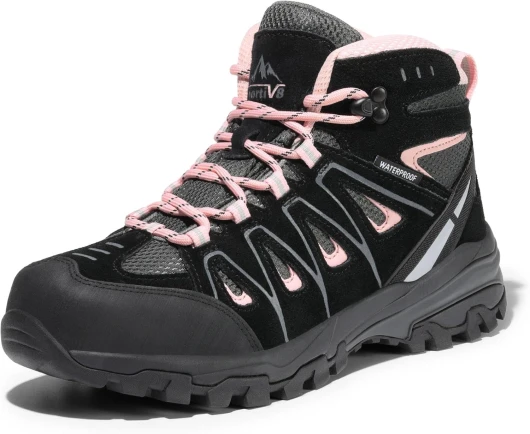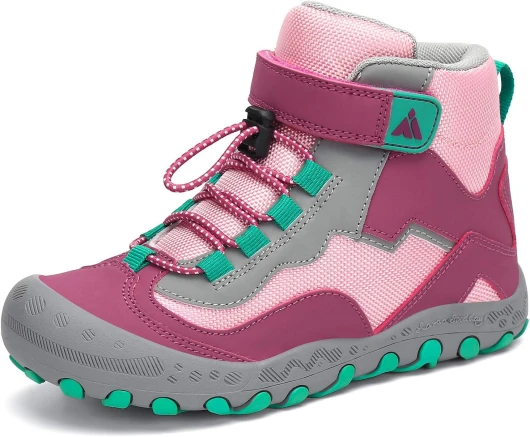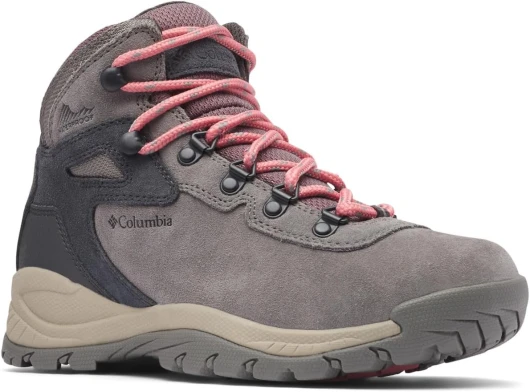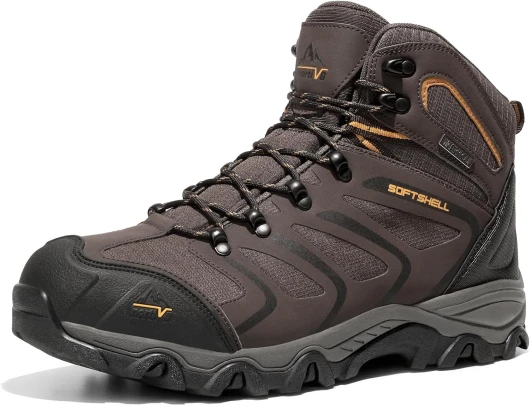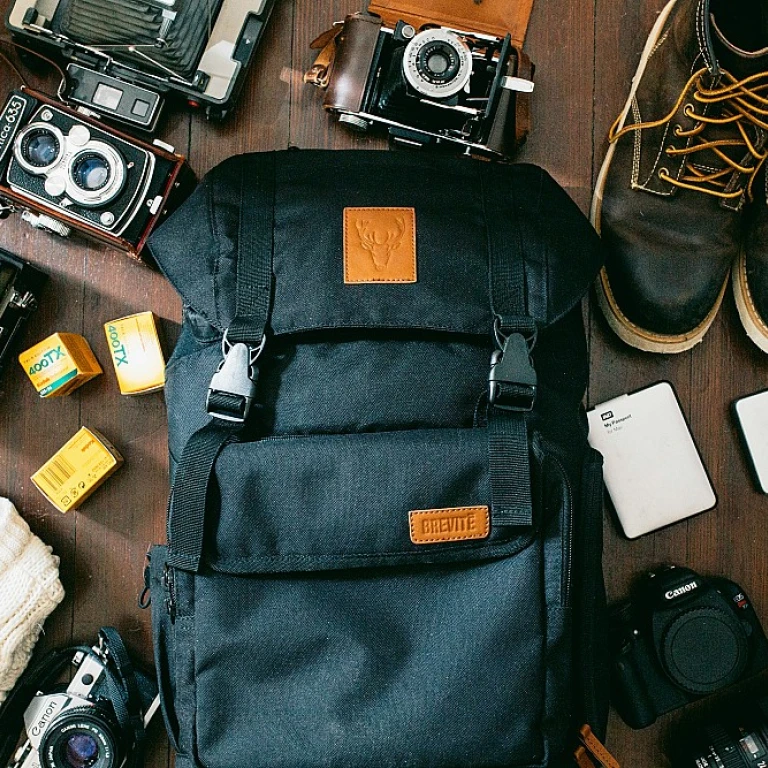
Understanding Ankle Support
The Role of Ankle Support in Hiking Footwear
Understanding the role of ankle support in hiking boots is crucial for outdoor enthusiasts looking to protect their feet during treacherous treks. Ankle support plays a significant role in safeguarding against sprains and injuries, which are common when navigating rugged terrains and uneven surfaces. The level of support provided by a hiking boot can directly impact the stability and comfort you experience on the trail.
Hiking boots with excellent ankle support are designed to stabilize the foot and reduce the risk of injuries. This feature is particularly vital for those who venture into challenging environments where the foot and ankle are subject to increased stress and impact. The best options often include structural reinforcements, such as a stiff heel counter or a mid-cut design, which help in maintaining the foot's alignment.
For those considering the varying needs of men and women, it’s important to look at specific support features, such as cushioned insoles that align with the foot's arch. This supplementary protection not only assists in keeping the ankle steady but also contributes to a more comfortable hiking experience. Ensuring the right blend of support and comfort can vastly improve your hikes and prevent potential long-term issues.
Choosing shoes with proper ankle support is not merely about picking a higher cut. It's about examining design aspects that distribute the weight evenly, reduce fatigue, and offer flexibility without compromising safety. Given the vast array of options available in the sale price range, it is essential to select the right shoe that combines functionality with durability.
For those with specific needs or existing conditions, incorporating aids like supination insoles can further enhance the ankle's stability and overall comfort while exploring various terrains. As we delve deeper, exploring real-life experiences can offer further insight into how well different brands execute these supportive features.
Materials and Design Features
Features and Innovations in Hiking Boots
When exploring the essential aspect of ankle support in hiking boots, it's critical to consider the various materials and design features that enhance both comfort and stability. Materials such as high-quality leather, synthetic fabrics, and mesh are often utilized to ensure durability and breathability, accommodating different hiking conditions and environments. Modern hiking boots incorporate innovative features designed to provide the best possible support for your foot and ankle. For instance, many brands focus on creating shoes with a mid-to-high top design, ensuring that it hugs the ankle firmly while offering the freedom of movement that both men and women hikers crave. This design provides enhanced impact protection, which is crucial when navigating challenging terrains.Other features worthy of consideration include a well-cushioned heel and toe box, which provide additional comfort during long walking or low-intensity hiking. Many boots are equipped with arch support systems that cater to the specific needs of individuals, especially those dealing with foot and ankle issues. You might also want to explore new trends in hiking footwear, such as the rise of zipper boots, which offer convenience without compromising support. Color options are plenty, including favorites like color black, to adapt to different styles and preferences, making the choice of hiking boots as much a personal statement as a functional purchase. Features like lace boot designs, waterproof work capabilities, and breathable midsoles can often justify a higher sale price but ultimately lead to a more fulfilling hiking experience. Remember to invest in boots with features that align with your specific needs and expectations, enhancing your comfort and confidence on any trail.
Choosing the Right Fit
Finding the Perfect Hiking Boot Fit
Choosing the right fit for your hiking boots is essential not only for comfort but also for providing the optimal ankle support that every hiker desires. A proper fit can make all the difference in how your foot, ankle, and entire leg endure the rigors of the trail. Here’s what to keep in mind:- Sizing Concerns: It’s crucial to get your shoe size correct. While many hikers might be tempted to buy with their normal shoe size, hiking boots often require a slightly different measurement. Make sure your toes have enough room to wiggle at the front, yet your heel remains secure to avoid blisters.
- Gender-Specific Design: Boots designed specifically for men and women take into account different foot anatomies. For example, boots for women may focus more on a narrower fit. Always verify whether you're looking at the best men's or women's version.
- Arch and Ankle Support: Look for boots that have adequate arch support to complement ankle support, which will help prevent foot fatigue and reduce the risk of ankle injuries. Consider mid waterproof varieties for balanced support and weatherproofing.
- High Top vs. Low Cut: While high top boots provide increased ankle protection and support, low cut shoes may be preferred by those seeking more freedom for lighter treks or running scenarios.
- Try Before You Buy: Even if you find the best sale price online, it's wise to try on multiple options to ensure a good fit. Walk around and assess how the shoes feel on various terrains if you can.
Comparing Ankle Support Across Brands
Evaluating Ankle Support Across Various Brands
When it comes to choosing hiking boots for ankle support, different brands offer diverse features and designs that cater to various preferences and needs. It's essential to explore how specific features like boot height, materials, and construction techniques contribute to ankle stability.
- Some brands focus on providing high-top designs with comprehensive ankle coverage, ensuring that the foot and ankle are securely held and minimizing the risk of twists and sprains.
- Mid waterproof boots often balance ankle protection with mobility. These boots provide sufficient coverage while maintaining a level of agility, making them suitable for various terrains.
- Arch support is another critical consideration. Brands that integrate supportive arches into their design help in distributing weight evenly across the foot, reducing the stress on the ankle.
- For specific genders, such as men or women, certain brands offer tailored designs that factor in anatomical differences, giving the best fit and support.
- In terms of color preferences, offerings range from classic color black to more vibrant colors, although the aesthetic should always be secondary to functionality.
Checking the price and sales is also vital. While more expensive doesn’t always mean better, enduring ankle support often comes from brands that invest in research and materials - something to keep in mind when considering the shoes' price versus their features.
Lastly, assessing reviews and real-life experiences of other hikers can give further insights into which brands stand out for their support features while ensuring that walking, hiking, or even running is a comfortable experience. Considering these factors, you can find the best ankle support that meets both your functional needs and budget preferences.
Real-Life Experiences
Real World Insights: Ankle Support in Action
The true test of hiking boots lies in their performance on the trail, where every step demands reliability and comfort. A well-designed boot provides steadfast ankle support and can make the difference between a successful hike and a day fraught with discomfort or even injury.Enthusiasts have repeatedly emphasized the role ankle support plays in preventing foot and ankle injuries during long treks. Quality materials and design focusing on stabilization ensure that boots maintain their shape and functionality even in challenging terrains. Many have noted that high top designs are particularly effective for maintaining proper foot and ankle alignment, an essential factor in disaster prevention, especially when facing unpredictable outdoor conditions.
In testimonials, women and men bring attention to boots that exhibit the best ankle support features such as mid waterproof construction and cushioned arch support, addressing universal concerns like low durability and inadequate protection. A boot's ability to absorb impact — complemented by a well-cushioned heel and toe area — adds to its capability, ensuring that the foot receives optimal protection.
A hiking boot’s lace boot system can also make or break the user experience. A secure fit impacts overall comfort, affecting how the shoe adapts to different foot shapes and sizes. Fit consistency across men's and women's designs ensures that each boot accommodates the wearer’s foot dynamics during demanding activities like running or walking on uneven surfaces.
As prices for boots have become more competitive, with some models available at sale price, the influx of affordable yet high-quality designs has made it easier for outdoor enthusiasts to find shoes combining performance with aesthetic appeal, such as the popular color black options. From basketball shoes with their robust ankle support to specific water-resistant designs, there's a plethora to choose from.
With customer reviews and real-world experiences guiding your choice, finding a fit that provides full-foot stability is invaluable — and it doesn’t necessarily mean choosing the most expensive option. Instead, consider boots that offer excellent protection and comfort tailored to your style of adventure. Whether it’s long hikes, short walks, or demanding trails, investing time in selecting the right pair can ensure every adventure is met with confidence and security.
Maintenance and Care Tips
Preserving the Functionality of Your Ankle Support
Taking care of your hiking boots is not only about maintaining their aesthetic appeal but also about ensuring their ankle support stays intact. Proper maintenance can significantly prolong the life of your shoes and sustain their performance on challenging terrains. Here's how you can do it:- Regular Cleaning: After every hiking trip, clean your boots thoroughly. Remove dirt and mud, which can wear down the materials and affect the ankle support. Use a soft brush and mild soap to scrub away stubborn stains without damaging the shoe.
- Drying Techniques: Wet boots are detrimental to both foot comfort and ankle securement. After deducing moisture with a towel, allow them to air dry at room temperature. Avoid direct heat sources like radiators as they can warp shoes and wear down material quality.
- Conditioning Leather Boots: For those with leather components, such as lace boots or high top designs, conditioning is crucial. Use leather conditioners to prevent cracking and maintain suppleness, which indirectly supports your ankles during hikes.
- Regular Checks: Inspect your boots for signs of wear, especially around the ankle support area. Look for signs of tearing or fraying, which could lessen the support received by that all-important area around your foot and heel.
- Timely Replacements: Even the best shoes will eventually need replacement. Observe the support level over time, and if you notice a decrease, it might be time to invest in a new pair, whether it is for men or women, that fits both your feet and ankle needs.

